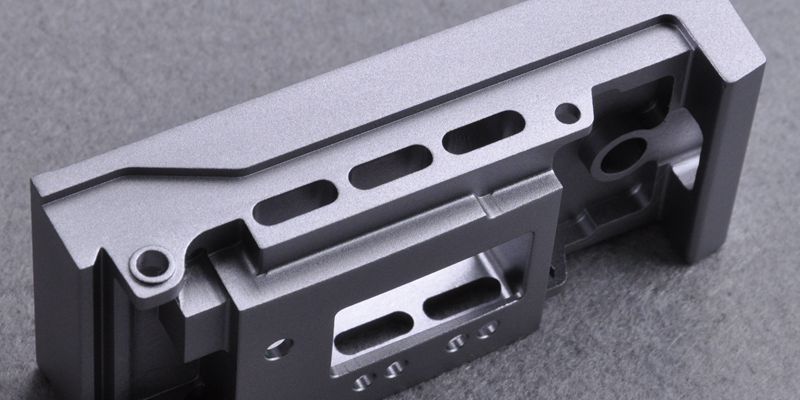- July 26, 2022
A bead blast finish is an excellent surface finish suitable for a wide range of applications. It stems under the broad umbrella of “media blasting,” one of the most popular surface finishes available for custom machined parts. Besides bead blasting, other media blasting techniques include abrasive planting and sandblasting, each having its benefits and drawbacks.
This article will focus on bead blast finish and everything it entails. We will explain the principle behind the process and the various tools used to achieve the best bead blast surface finish. You will also learn the advantages and setbacks of this surface finish to help you make the right decision for your project. Let’s get to it!
Looking for custom finish for your projects? WayKen offers bead blasting finish services in different sizes to ensure your product’s appearance and functional needs.
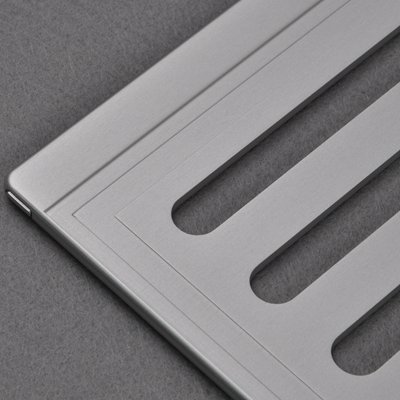
What Is Bead Blasting?
Bead blasting involves the release of fine glass or steel beads at high pressure to finish a component’s surface. During the process, a high-pressured tool shoots bead-shaped media towards the surface.
This process occurs in a well-monitored bead blasting cabinet, leaving a shiny, smooth, clean surface. Manufacturers often use a bead blast finish for metals, plastics, rubber, and glass materials to improve their appearance and physical properties.
The Principle Behind Bead Blast Finish: How Does It Work?
If you’re familiar with other abrasive blasting methods, then you have an idea of bead blasting principles. Generally, it involves projecting spherical or bead-shaped media against the surface of a workpiece. The impact of the jagged media leaves a smooth, uniform finish on the component. The dimpling of the bead blasting media gives the eventual bead blast surface finish.
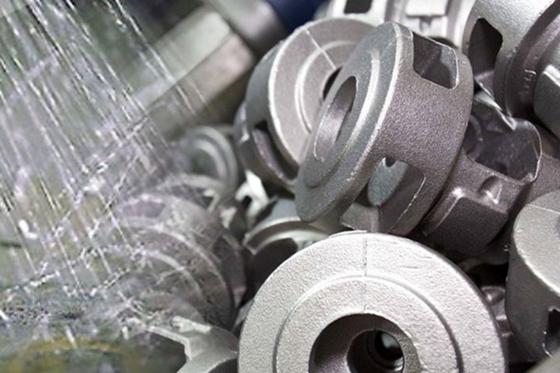
Bead blasting is also an excellent option when you’re looking for rough yet consistent finishes. Fine glass media can leave “dull” or “satin” finishes on your 3D printed or machined parts’ surfaces, making it a top choice for post-finishing services. On the other hand, you can use coarse glass media to give a uniform “rough” bead blasting finish.
Asides from leaving uniform surface finishes, bead blasting also help mask imperfections on workpiece’s surfaces. While some parts’ finishing techniques may leave components with darker surfaces, the bead blast finish keeps the base color of the substrate. As a result, you will get parts with brighter surfaces.
Bead Blasting vs Sand Blasting: What is the Difference?
The main difference between bead blasting and sandblasting lies in the material used in the blasting process and the safety concerns associated. While both work with similar principles, using them in differing circumstances is better. The glass bead blasting technique uses spherical glass media at high pressure while sandblasting utilizes silica sand for the finishing process.
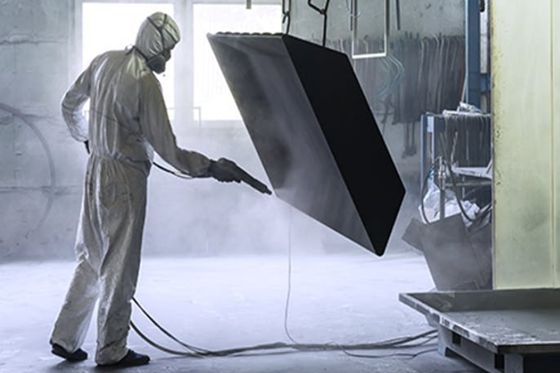
Sandblasting is a much faster technique than bead blasting. However, a bead blast surface finish is much gentler on the material, effectively stripping it without damaging the material underneath. This process does not affect the component’s dimensions, giving a more polished surface with optimum quality.
On the other hand, sandblasting is much harsher. It propels fine bits of sand at extreme velocities to clean or etch metal surfaces. Thus, it creates lots of sand or silica dust that can harm the operator’s health when inhaled. Prolonged inhalation may lead to a health condition called silicosis.
Furthermore, sand blasting may reshape the underlying component if not regulated properly, changing the part’s dimension. Therefore, monitoring the process carefully and wearing preventive gear during sandblasting is essential.
Equipment and Materials Used for a Bead Blast Finish
The key to a successful bead blasting process is efficient tooling that serves the right purposes. Let’s look at the different tools required to get the best results.
Bead Blasting Media
The media itself is an essential bead blasting material. Machinists generally use two types of beads for a bead blast surface finish. They are glass beads and steel beads.
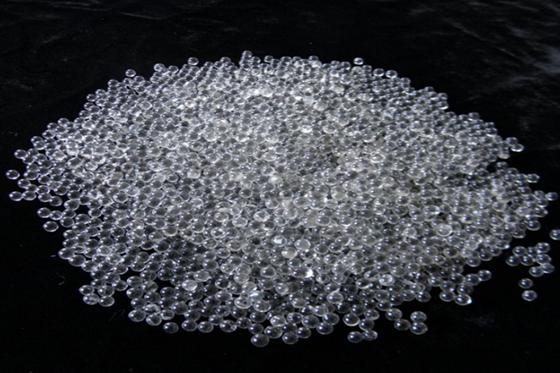
Glass beads are made from lead-free, soda-lime glass designed to come in spherical shapes. These materials are more environmentally friendly since you can recycle them over 30 times. They are also softer on components’ surfaces.
On the other hand, steel shots come from molten steel designed into round objects with round molds. They are cost-effective alternatives because they are durable and allow several recycling rounds. Steel beads are more effective for polishing or removing unwanted textures on metal surfaces.
Bead Blasting Cabinet
This is where the whole blasting process occurs. You must choose a high-quality bead blaster cabinet that can ensure the safety of the personnel carrying out the operation. At the same time, the cabinet should not compromise the quality of results.
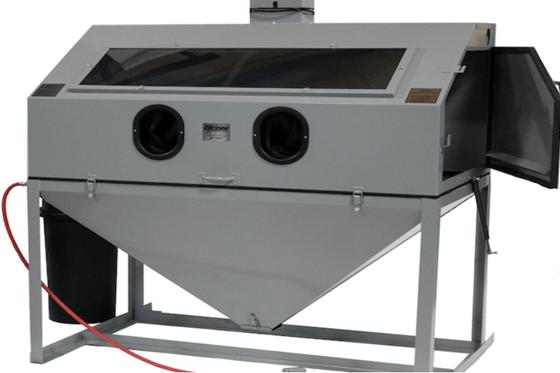
A typical bead blasting machine must be constructed with a solid material. Steel is the perfect choice in this case because it is a sturdy and durable material. Cabinets made from steel usually last longer and can withstand the high level of pressure that comes with the process.
Likewise, you don’t want your cabinet to have weak legs and disrupt the finishing process. The legs of the glass bead blaster cabinet must be strong enough to support the weight of the cabinet, the bead blasting media, and the workpieces. Weak legs will constantly shake and be unsteady, and this can be dangerous to the operator. Moreover, having your tool break down during the bead blast finish will be daunting.
So, what are the essential components of a good glass bead blasting cabinet?
●Consistent Cabinet Sealing
The cabinet’s sealing on the inside must be very good. Remains or debris from abrasive blasting finishes can be dangerous to the health. Therefore, the seals must prevent the dust or debris from leaving the cabinet.
●View Window Protection
Your bead blaster cabinet should have larger windows to help observe workpieces adequately as you work inside the cabinet. However, what’s more important than the window’s size is its protection. Some glass beads tend to cause frosting on the glass after some time.
As a result, they may impair visibility, affecting the quality of results. Therefore, you should put replaceable protective sheets on your cabinet’s view window for longer blasting with no issue.
Bead Blaster Gun
A bead blast finish cannot occur without the blasting gun. Therefore, it is a vital component to always keep in mind. There are several blast gun designs, and their operations also differ. While some work using a hand pedal, others work via a foot pedal.
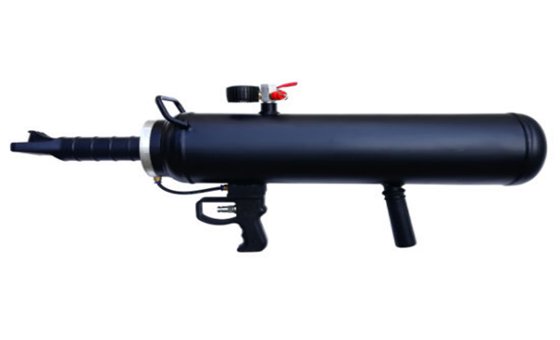
The choice of blast gun is up to you or the operator. However, if your project requires long blasting sessions, you should consider blast guns with foot pedals. They are more comfortable and cause less strain on the operator.
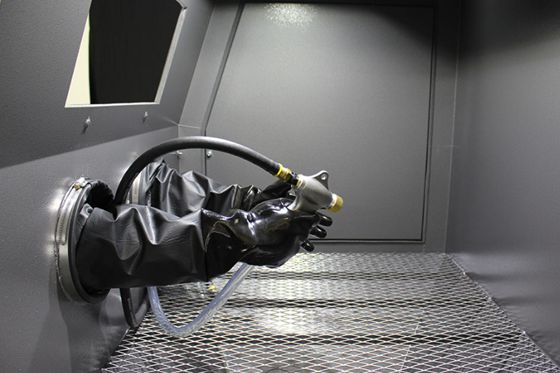
Blasting Gloves
Safety and comfort are a priority for every bead blasting process. Blasting gloves are among the protective gear to ensure adequate protection of the operator. The gloves often come together with the cabinet. Since you may be holding the blast gun in your hands, you want to protect them from residual harm. These gloves also help you get a good grip on the gun.
Properties of Bead Blast Surface Finish
Without changing the component’s dimensions, bead blast finish facilitates the creation of uniform surface finishes. As opposed to other media, this method is not aggressive. Additionally, it works excellently with a variety of materials, making it appropriate for various industries.
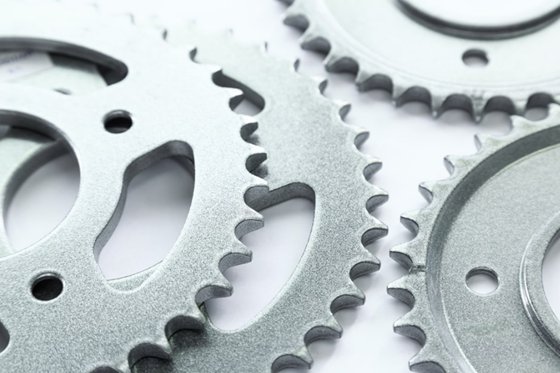
Bead blast surface finishing is a technique manufacturers use to increase component longevity. This finishing procedure is adaptable and works with many other manufacturing procedures. Smaller beads, for instance, are useful in lighter processes requiring fine details.
However, when bead blasting stainless steel or aluminum, medium-sized beads are the ideal option. They are popular for their capacity to cover up surface defects on components. Finally, larger beads are preferred for cleaning and deburring rough surfaces on automotive parts and other metal castings.
Applications of Bead Blasting
Functional Applications
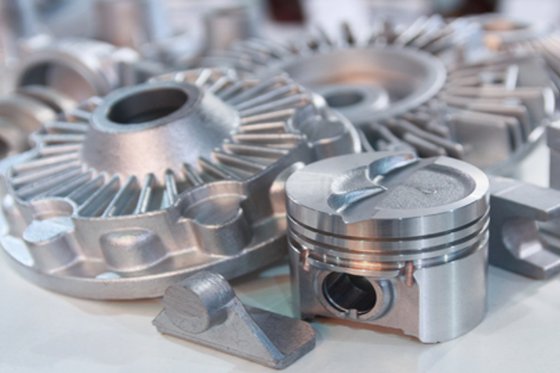
Generally, bead blasting is a versatile process that helps cover a wide range of applications, including the following:
- Peening – to help metals resist fatigue and prevent cracking
- Deburring – smoothening the rough edges or ridges of metals
- Cosmetic finishing – adding aesthetic features to components
- Preparing metal surfaces for other secondary finishes like powder coating and painting
- Polishing materials such as aluminum, stainless steel, and cast iron
- Removing paint, rust, scale, and calcium deposits
Industries Applications
Bead blast finish is also suitable for a wide range of applications for several industries, including:
- Aircraft components as preparation for painting
- Automotive parts before adding brand new paint
- Military components
- Aluminum parts for medical applications
Pros and Cons of Bead Blast Finish
The bead blast surface finish gives you a non-directional smooth and textured surface that is also aesthetically pleasing. This surface finishing technique is versatile, working on various materials, including aluminum, stainless steel, titanium, copper, brass, and plastics.
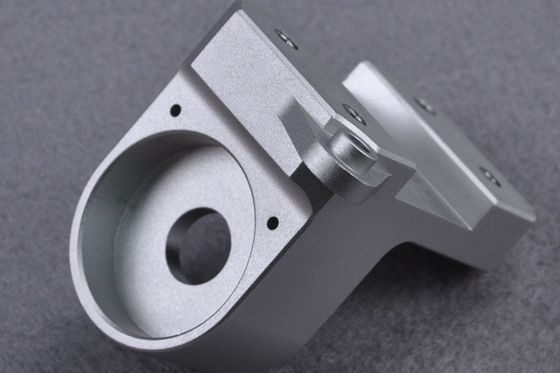
Despite its usefulness and versatility, you should also consider some of the downsides of bead blasting. This section will highlight the advantages and disadvantages of using bead blasting for your project.
Pros of Bead Blasting
- It is one of the most affordable and less aggressive surface finishes available.
- Bead blasting is much safer than several other blasting processes.
- The blasting process does not change the underlying color of the workpiece, thereby giving you a brighter finish.
- Bead blasting media like glass beads can be recycled up to 30 times and reused before replacement.
- Since the glass beads come from lead-free material, the eco-friendly process does not leave any harmful residues.
- If you desire, you can mask some surfaces of the component from the bead blaster.
- It is an excellent surface finishing option for intricate components.
Cons of Bead Blasting
- It may not be suitable for applications that require strict tight tolerances.
- Blasting tougher materials may take longer.
- Using glass beads may not give room for paint adherence.
- It can be labor intensive since it is operated manually.
Best Practices for Quality Bead Blast Finishes
From the several bead blasting media available to the pressure used during the process, many variables can affect the final appearance of bead blasted parts. Therefore, you must provide adequate specifications to control these variables for quality and consistent results.
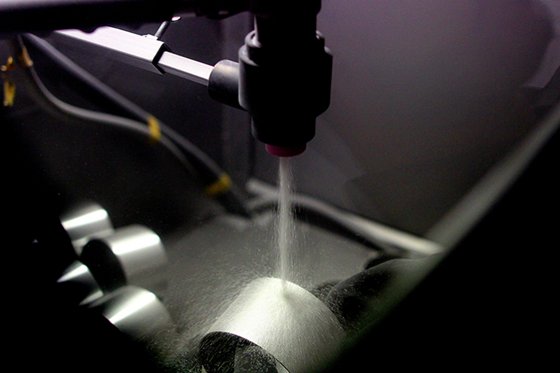
Let’s go over the best practices and tips for better control of the bead blast finishing process and excellent finishes.
Specify the Media and Grit Size
The kind of media you use will determine the feel and look of your eventual bead blast finish. For instance, fine glass beads will give you a uniform, satin finish, while coarse glass beads give a rough finish. On the other hand, steel shots are best used for polishing and removing unwanted textures from materials.
The lower the grit of your abrasive material, the coarser the particles will be. In contrast, higher grits have finer particles. Generally, media sizes can be very fine, fine, medium, or coarse. Your choice will depend on the result you wish to get. You should include this information in your part drawings or order notes when you request a quote.
Avoid Tight Surface Roughness Callouts
The nature of the bead blasting process will directly impact the surface roughness of the component. Sometimes, it is difficult to keep to tight surface roughness requirements when using bead blast surface finish. Therefore, keeping the surface roughness at nothing lower than 32 µin Ra if you need a smooth part is preferable.
Add Masking Notes for Critical Features
Suppose your component has surfaces or features that should not have the bead blast finish. In that case, you should include masking callouts for these features. Examples of such features are O-ring grooves and sealing surfaces. You may also add masking requirements for small pitch threaded features.
Use the Lowest Pressure Possible for Bead Blasting
You also want to keep the pressure of the bead blaster as low as possible. Glass beads often give the best results at low pressures. Therefore, you want to start with about 50 PSI. This will increase the lifespan of your beads and will give you the optimum bead blasting finish.
Smashing the beads on the component at extremely high pressures may crush the beads and increase total production costs. Likewise, you tend to produce excess debris and dust, which may be dangerous to the operator or deposit on the component’s surface.
Strip Off Oxides or Rusts Before Applying the Bead Blast Finish
When bead blasting aluminum, you must first strip off its oxide layer because it may be too difficult to polish. Glass beads won’t help get rid of this layer. Therefore, you will need to use sharp cutting material to remove the oxide layer or rust.
Conclusion
A bead blast finish is ideal for getting semi-polish, satin-like finishes on your parts. It is a versatile surface finishing technique that works well on various materials and is suitable for an extensive list of applications. It is also less aggressive and relatively affordable, making it a great choice for your project.
However, it would be best to work with a reliable partner to get the best results from a bead blast surface finish. WayKen offers high-quality parts finishing services at very competitive prices. We are committed to meeting the needs of parts requiring a variety of surface finishes. Contact us to get expert advice for your next project. If you’re ready to work with us, request a quote today!
FAQ
What is the purpose of the bead blast finish?
Bead blasting is flexible and versatile. It can help clean the surface of your component to create a uniform, dull or satin-like surface texture and improve its overall appearance.
Is glass bead blasting safe?
Using glass beads is safer than most other bead blasting media. They do not produce silica dust or debris that may cause harm to the operator. They are also gentle on the part’s surface and won’t change its dimension.

